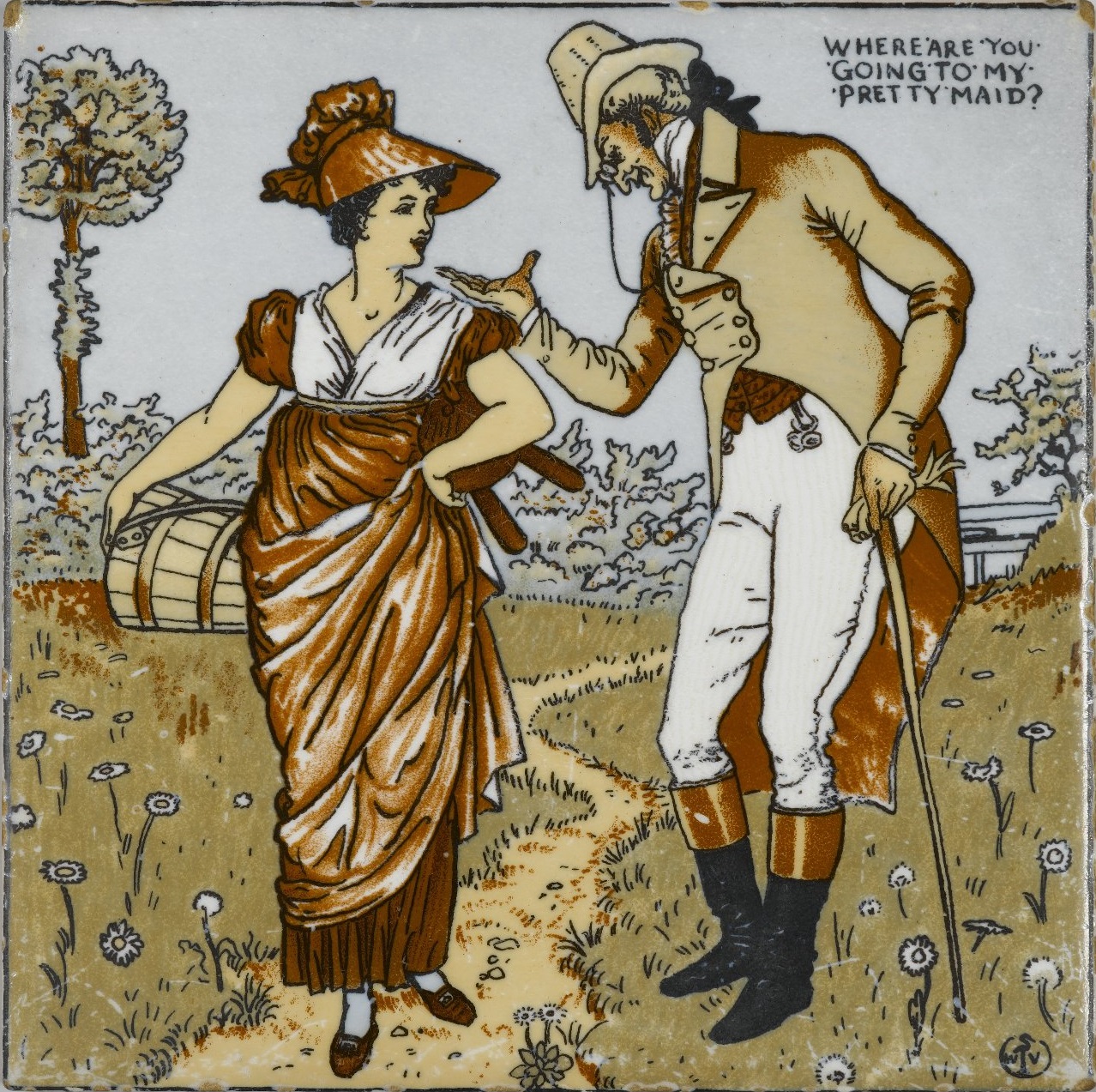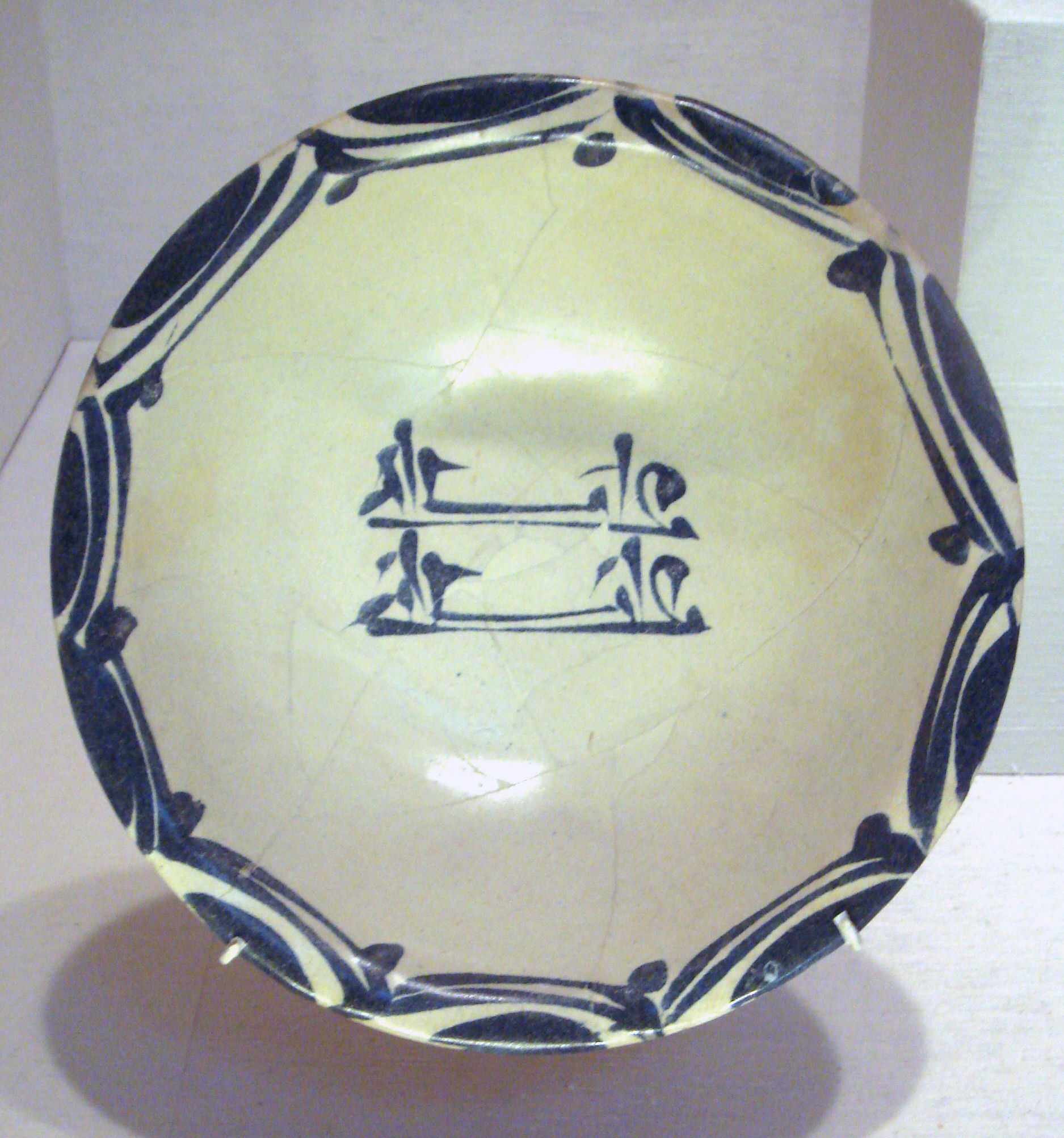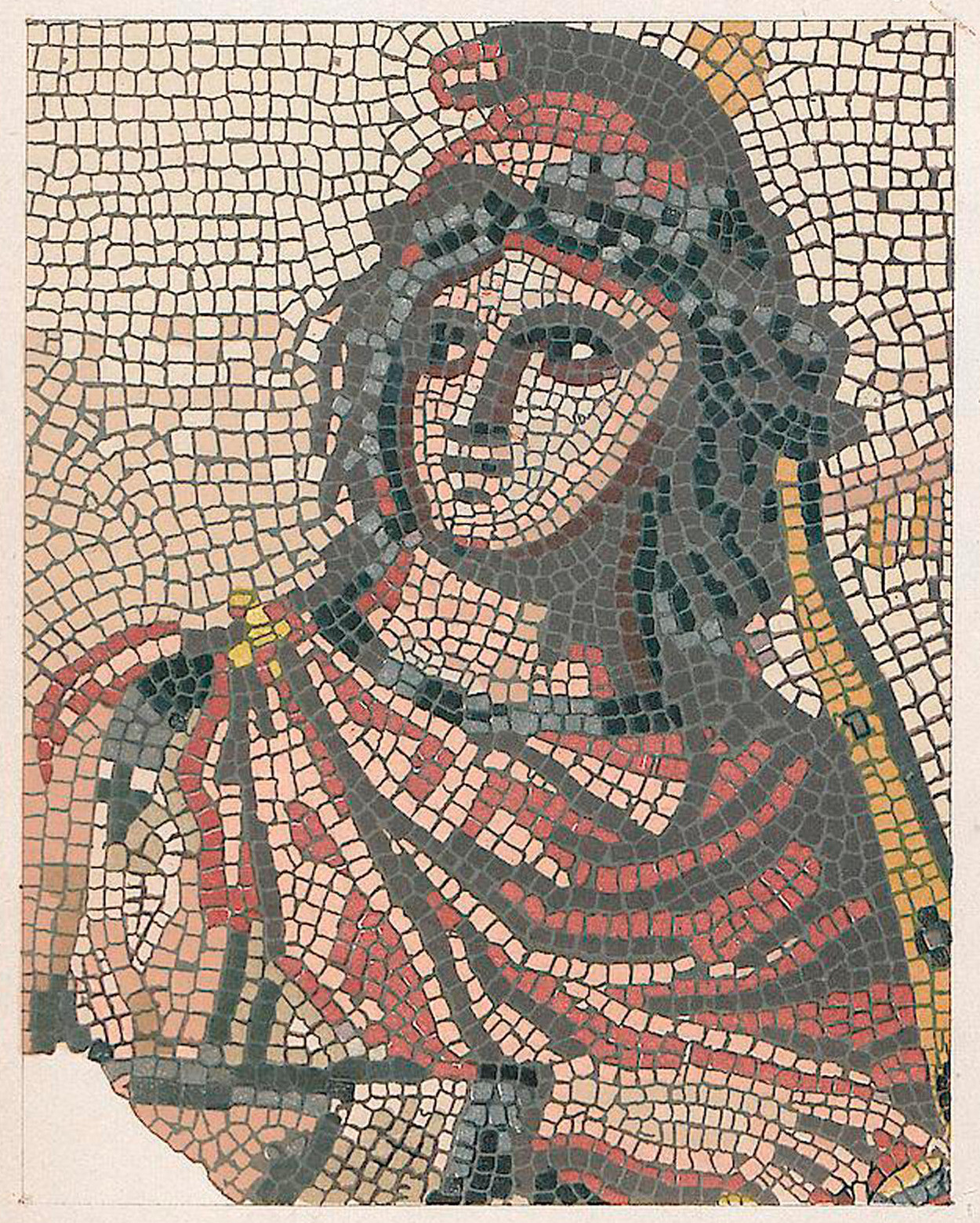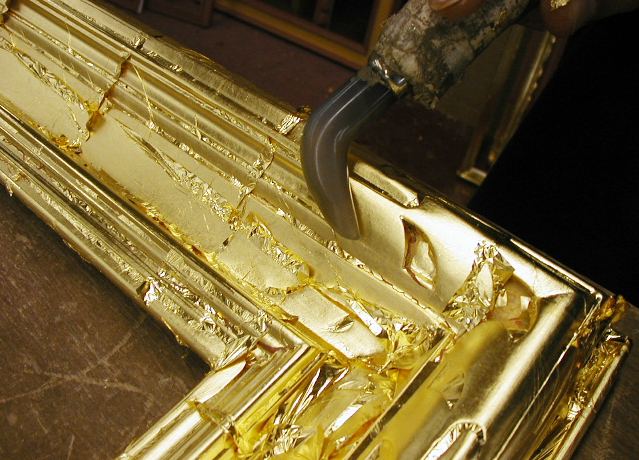|
Transfer-print
Transfer printing is a method of decorating pottery or other materials using an engraved copper or steel plate from which a monochrome print on paper is taken which is then transferred by pressing onto the ceramic piece. Fleming, John & Hugh Honour. (1977) ''The Penguin Dictionary of Decorative Arts. '' London: Allen Lane, p. 800. Pottery decorated using this technique is known as transferware or transfer ware. It was developed in England from the 1750s on, and in the 19th century became enormously popular in England, though relatively little used in other major pottery-producing countries. The bulk of production was from the dominant Staffordshire pottery industry. America was a major market for English transfer-printed wares, whose imagery was adapted to the American market; several makers made this almost exclusively. The technique was essential for adding complex decoration such as the Willow pattern to relatively cheap pottery. In particular, transfer printing brought t ... [...More Info...] [...Related Items...] OR: [Wikipedia] [Google] [Baidu] |
Blue And White Pottery
"Blue and white pottery" () covers a wide range of white pottery and porcelain decorated under the glaze with a blue pigment, generally cobalt oxide. The decoration was commonly applied by hand, originally by brush painting, but nowadays by stencilling or by transfer-printing, though other methods of application have also been used. The cobalt pigment is one of the very few that can withstand the highest firing temperatures that are required, in particular for porcelain, which partly accounts for its long-lasting popularity. Historically, many other colours required overglaze decoration and then a second firing at a lower temperature to fix that. The origin of the blue glazes is thought to lie in Iraq, when craftsmen in Basra sought to imitate imported white Chinese stoneware with their own tin-glazed, white pottery and added decorative motifs in blue glazes. Such Abbasid-era pieces have been found in present-day Iraq dating to the 9th century AD, decades after the opening o ... [...More Info...] [...Related Items...] OR: [Wikipedia] [Google] [Baidu] |
Enoch Wood
Enoch Wood (1759–1840) was an English potter and businessman, from one of the major families in Staffordshire pottery. Starting as a modeller, he established a successful business in Burslem in the Staffordshire Potteries, from 1790-1818 trading as Wood and Caldwell. In the 18th century they produced many Staffordshire figures, which Wood modelled himself, and other types of earthenware and stoneware. After 1818 his company, now Enoch Wood & Sons, produced large quantities of blue and white transfer-printed tableware in earthenware, much of which was exported to America. Life He was born in 1759; his father Aaron Wood (1717–1785) was a highly regarded pottery modeller (mould maker), and his uncle Ralph Wood I (1715–1772), also a potter, became famous for producing well-modelled figures.Enoch Wood & Sons P ... [...More Info...] [...Related Items...] OR: [Wikipedia] [Google] [Baidu] |
Pearlware
Creamware is a cream-coloured refined earthenware with a lead glaze over a pale body, known in France as '' faïence fine'', in the Netherlands as ''Engels porselein'', and in Italy as ''terraglia inglese''.Osborne, 140 It was created about 1750 by the potters of Staffordshire, England, who refined the materials and techniques of salt-glazed earthenware towards a finer, thinner, whiter body with a brilliant glassy lead glaze, which proved so ideal for domestic ware that it supplanted white salt-glaze wares by about 1780. It was popular until the 1840s. Variations of creamware were known as "tortoiseshell ware" or "Whieldon ware" were developed by the master potter Thomas Whieldon with coloured stains under the glaze. It served as an inexpensive substitute for the soft-paste porcelains being developed by contemporary English manufactories, initially in competition with Chinese export porcelains. It was often made in the same fashionable and refined styles as porcelain. The ... [...More Info...] [...Related Items...] OR: [Wikipedia] [Google] [Baidu] |
Willow Pattern
The Willow pattern is a distinctive and elaborate chinoiserie pattern used on ceramic tableware. It became popular at the end of the 18th century in England when, in its standard form, it was developed by English ceramic artists combining and adapting motifs inspired by fashionable hand-painted blue-and-white wares imported from Qing dynasty China. Its creation occurred at a time when mass-production of decorative tableware, at Stoke-on-Trent and elsewhere, was already making use of engraved and printed glaze transfer printing, transfers, rather than hand-painting, for the application of ornament to standardized vessels (transfer ware). Many different Chinese-inspired landscape patterns were at first produced in this way, both on bone china or porcellanous wares, and on white earthenware or pearlware. The Willow pattern became the most popular and persistent of them, and in various permutations has remained in production to the present day. Characteristically the background col ... [...More Info...] [...Related Items...] OR: [Wikipedia] [Google] [Baidu] |
Creamware
Creamware is a cream-coloured refined earthenware with a lead glaze over a pale body, known in France as '' faïence fine'', in the Netherlands as ''Engels porselein'', and in Italy as ''terraglia inglese''.Osborne, 140 It was created about 1750 by the potters of Staffordshire, England, who refined the materials and techniques of salt-glazed earthenware towards a finer, thinner, whiter body with a brilliant glassy lead glaze, which proved so ideal for domestic ware that it supplanted white salt-glaze wares by about 1780. It was popular until the 1840s. Variations of creamware were known as "tortoiseshell ware" or "Whieldon ware" were developed by the master potter Thomas Whieldon with coloured stains under the glaze. It served as an inexpensive substitute for the soft-paste porcelains being developed by contemporary English manufactories, initially in competition with Chinese export porcelains. It was often made in the same fashionable and refined styles as porcelain. The ... [...More Info...] [...Related Items...] OR: [Wikipedia] [Google] [Baidu] |
China Painting
China painting, or porcelain painting, is the decoration of glazed porcelain objects, such as plates, bowls, vases or statues. The body of the object may be hard-paste porcelain, developed in China in the 7th or 8th century, or soft-paste porcelain (often bone china), developed in 18th-century Europe. The broader term ceramic painting includes painted decoration on lead-glazed earthenware such as creamware or tin-glazed pottery such as maiolica or faience. Typically the body is first fired in a kiln to convert it into a hard porous Biscuit (pottery), biscuit or bisque. Underglaze decoration may then be applied, followed by glaze, which is fired so it bonds to the body. The glazed porcelain may then be painted with overglaze decoration and fired again to bond the paint with the glaze. Most pieces use only one of underglaze or overglaze painting, the latter often being referred to as "enamelled". Decorations may be applied by brush or by stenciling, transfer printing and screen pr ... [...More Info...] [...Related Items...] OR: [Wikipedia] [Google] [Baidu] |
Underglaze
Underglaze is a method of decorating pottery in which painted decoration is applied to the surface before it is covered with a transparent ceramic glaze and fired in a kiln. Because the glaze subsequently covers it, such decoration is completely durable, and it also allows the production of pottery with a surface that has a uniform sheen. Underglaze decoration uses pigments derived from oxides which fuse with the Ceramic glaze, glaze when the piece is fired in a kiln. It is also a cheaper method, as only a single firing is needed, whereas overglaze decoration requires a second firing at a lower temperature. Many historical styles, for example Persian mina'i ware, Japanese Imari ware, Chinese doucai and wucai, combine the two types of decoration. In such cases the first firing for the body, underglaze decoration and glaze is followed by the second firing after the overglaze enamels have been applied. However, because the main or glost firing is at a higher temperature than used in ... [...More Info...] [...Related Items...] OR: [Wikipedia] [Google] [Baidu] |
Ceramic Glaze
Ceramic glaze, or simply glaze, is a glassy coating on ceramics. It is used for decoration, to ensure the item is impermeable to liquids and to minimize the adherence of pollutants. Glazing renders earthenware impermeable to water, sealing the inherent porosity of earthenware. It also gives a tougher surface. Glaze is also used on stoneware and porcelain. In addition to their functionality, glazes can form a variety of surface finishes, including degrees of glossy or matte finish and color. Glazes may also enhance the underlying design or texture either unmodified or inscribed, carved or painted. Most pottery produced in recent centuries has been glazed, other than pieces in bisque porcelain, terracotta, and some other types. Tiles are often glazed on the surface face, and modern architectural terracotta is often glazed. Glazed brick is also common. Sanitaryware is invariably glazed, as are many ceramics used in industry, for example ceramic insulators for overhead power li ... [...More Info...] [...Related Items...] OR: [Wikipedia] [Google] [Baidu] |
Apollo
Apollo is one of the Twelve Olympians, Olympian deities in Ancient Greek religion, ancient Greek and Ancient Roman religion, Roman religion and Greek mythology, Greek and Roman mythology. Apollo has been recognized as a god of archery, music and dance, truth and prophecy, healing and diseases, the Sun and light, poetry, and more. One of the most important and complex of the Greek gods, he is the son of Zeus and Leto, and the twin brother of Artemis, goddess of the hunt. He is considered to be the most beautiful god and is represented as the ideal of the ''kouros'' (ephebe, or a beardless, athletic youth). Apollo is known in Greek-influenced Etruscan mythology as ''Apulu''. As the patron deity of Delphi (''Apollo Pythios''), Apollo is an oracular god—the prophetic deity of the Pythia, Delphic Oracle and also the deity of ritual purification. His oracles were often consulted for guidance in various matters. He was in general seen as the god who affords help and wards off e ... [...More Info...] [...Related Items...] OR: [Wikipedia] [Google] [Baidu] |
Orpheus
In Greek mythology, Orpheus (; , classical pronunciation: ) was a Thracians, Thracian bard, legendary musician and prophet. He was also a renowned Ancient Greek poetry, poet and, according to legend, travelled with Jason and the Argonauts in search of the Golden Fleece, and descended into the Greek underworld, underworld to recover his lost wife, Eurydice. The major stories about him are centered on his ability to charm all living things and even stones with his music (the usual scene in Orpheus mosaics), his attempt to retrieve his wife Eurydice from the underworld, and his death at the hands of the maenads of Dionysus, who got tired of his mourning for his late wife Eurydice. As an archetype of the inspired singer, Orpheus is one of the most significant figures in the classical reception studies, reception of classical mythology in Western culture, portrayed or allusion, alluded to in countless forms of art and popular culture including poetry, film, opera, music, and painting ... [...More Info...] [...Related Items...] OR: [Wikipedia] [Google] [Baidu] |
Gilding
Gilding is a decorative technique for applying a very thin coating of gold over solid surfaces such as metal (most common), wood, porcelain, or stone. A gilded object is also described as "gilt". Where metal is gilded, the metal below was traditionally silver in the West, to make silver-gilt (or ''vermeil'') objects, but gilt-bronze is commonly used in China, and also called ormolu if it is Western. Methods of gilding include hand application and gluing, typically of gold leaf, chemical gilding, and electroplating, the last also called gold plating. Parcel-gilt (partial gilt) objects are only gilded over part of their surfaces. This may mean that all of the inside, and none of the outside, of a chalice or similar vessel is gilded, or that patterns or images are made up by using a combination of gilt and ungilted areas. Gilding gives an object a gold appearance at a fraction of the cost of creating a solid gold object. In addition, a solid gold piece would often be too soft or to ... [...More Info...] [...Related Items...] OR: [Wikipedia] [Google] [Baidu] |
Cobalt Blue
Cobalt blue is a blue pigment made by sintering cobalt(II) oxide with aluminium(III) oxide (alumina) at 1200 °C. Chemically, cobalt blue pigment is cobalt(II) oxide-aluminium oxide, or cobalt(II) aluminate, CoAl2O4. Cobalt blue is lighter and less intense than the (iron-cyanide based) pigment Prussian blue. It is extremely stable, and has historically been used as a coloring agent in ceramics (especially Chinese porcelain), jewelry, and paint. Transparent glasses are tinted with the silica-based cobalt pigment "smalt". Historical uses and production Ores containing cobalt have been used since antiquity as pigments to give a blue color to porcelain and glass. Cobalt blue in impure forms had long been used in Chinese porcelain. In 1742, Swedish chemist Georg Brandt showed that the blue color was due to a previously unidentified metal, cobalt. The first recorded use of ''cobalt blue'' as a color name in English was in 1777. It was independently discovered as an alumina ... [...More Info...] [...Related Items...] OR: [Wikipedia] [Google] [Baidu] |








